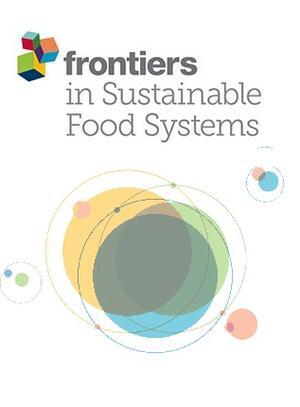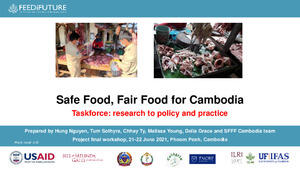
Types, levels and causes of post-harvest milk and dairy losses in sub-Saharan Africa and the Near East: Phase two synthesis report
Abstract
The following is a synthesis report highlighting the results of rapid appraisals
aimed at characterizing post-harvest milk and dairy losses in Ethiopia, Kenya,
Syria, Tanzania and Uganda. In Kenya, Uganda and Tanzania, the rapid
appraisals were undertaken during the dry month of July 2003, when milk
yields were relatively low in the region1. Post-harvest milk losses have been
quantified both in terms of quantity and monetary value lost. Specific links in
the milk chain where significant losses are experienced, and those losses that
have pragmatic solutions have been identified and targeted for appropriate
interventions aimed at reducing or eliminating the losses.
Key findings showed that most post-harvest milk losses are experienced in the
small-scale informal dairy sector; formal milk processors generally incur
minimal losses. In terms of quantity, significant milk losses occur at the farm
level (8.4, 28.6, 46.4 and 54.2 million litres of milk per year for Uganda,
Ethiopia, Tanzania and Kenya, respectively) valued at approximately 0.9–11
million US dollars. Post-harvest losses of milk at the farm represented 1.3 to
6.4 percent of the value of available milk at the farm level. Poor road
infrastructure and inadequate markets for raw milk are the main causes of
farm-level losses, which are largely in form of spoilage, spillage, and “forced
home consumption” (including by calves and humans) over and above normal
household consumption. Although in quantity terms forced losses may seem to
be high, in value terms they are less significant, because an estimated 70% of
the value of the milk is still captured. Along the marketing chain, milk loss is
mainly due to spillage and spoilage. These losses are occasioned by poor access
to markets, poor milk handling practices as well as irregular power supply in
milk processing plants. Based on the dry season rapid appraisal data, the total
value of post-harvest milk losses per year amounted 9.9, 14.2, 17.8 and 23.9
million US dollars for Tanzania, Ethiopia, Kenya and Uganda, respectively.
Recommendations for interventions aimed at reducing milk losses have been
targeted at the farm level and small-scale milk transporters. These are the two
points in the chain where losses in value were found to be most significant.
Four general areas of intervention are discussed: training, technology,
policy/legislation and information.
This report represents the first systematic attempt to accurately quantify postharvest
milk losses in the countries studied. However, because of the small
sample sizes, limited geographical coverage and the fact that the rapid
appraisals were undertaken during the dry season only, the results obtained
must be interpreted with caution, bearing in mind the limited scope of the
study. Additionally, some of the data provided was not up to the standard
required to make a complete valuation. Further comprehensive studies
covering a wider scope are needed as a follow-up to the rapid appraisals in
order to generate additional data on the levels of post-harvest milk and dairy
losses at the national level and across seasons. Nevertheless, the information
generated provides a useful basis for implementing the recommended
interventions.
Citation
Lore, T, Omore, A and Staal, S. 2005. Types, levels and causes of post-harvest milk and dairy losses in sub-Saharan Africa and the Near East: Phase two synthesis report. Nairobi, Kenya: ILRI.








